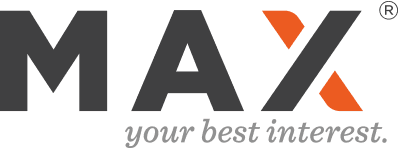New SEC rules offer an opportunity for advisors and their clients to reassess their strategies around liquid cash.

Major changes are on the horizon for money market funds. Following the 2008 Financial Crisis and the pandemic-induced stock market plunge in March 2020, the U.S. Securities and Exchange Community adopted new rules designed to discourage massive outflows and prevent future instability.
Under new regulations announced on July 12, 2023, money market funds—which are short-term-oriented pooled investment vehicles—will be required to keep at least 25% of their funds invested in assets with daily liquidity, and 50% of their assets must be kept in securities that are liquid on a weekly basis. Moreover, holders of institutional prime and tax-exempt money market funds will pay mandatory fees when a fund is forced to pay out daily redemptions that exceed 5% of fund assets. This essentially means that when the next period of market volatility arises, client returns could be significantly impacted.
Advisors have long considered money market funds as a safe place to transfer client assets prior to deciding where to invest longer term, or for storing emergency cash reserves. But these new rules may change that calculus, and advisors would be smart to further scrutinize money market funds before allocating client cash to these vehicles.
What do these new rules mean for clients? Here are five reasons why now is a good time to rethink money market funds and consider instead helping your clients move their cash into high-yielding FDIC-insured savings accounts:
1. Liquidity rules may drive down yields. The new regulations around liquidity will force fund managers to migrate fund holdings to more liquid investments. Part of how money market funds deliver high yield is by taking duration risk by purchasing longer-dated securities, so a regulatory mandate to curtail this activity can be expected to drive down returns.
2. Clients are at risk of paying added fees. With the rule change, certain money market funds with 5% or more daily redemptions must impose liquidity fees, meaning the remaining investors in a fund will have to bear the burden of those added costs, further diminishing returns.
3. Money market accounts are not FDIC-insured. Many investors mistakenly believe that money market funds are insured by the Federal Deposit Insurance Corporation. They’re not. In fact, during the financial crisis, the Reserve Primary Fund “broke the buck,” meaning clients didn’t get back 100 cents on the dollar. Ironically, investors in money market funds often earn less than they could simply by keeping their cash in FDIC-insured bank accounts. In short, by purchasing money market funds, clients are often taking on more risk and earning less return.
4. Beware of brokered deposits. Because the FDIC only guarantees up to $250,000 per depositor, per account type, per bank charter, depositors must be vigilant about staying within these limits. Many banks and brokerage firms offer a service known as cash sweeps, which route client cash to an intermediary that in turn spreads cash across a network of other banks. But this service can be risky, as assets are held in omnibus accounts and are not custodied directly in the depositor’s name. If the originating institution brokering the deposits were to fail, clients could temporarily lose access to all their savings. Moreover, if clients already hold deposits at another bank, they may unknowingly exceed FDIC limits. It’s smarter (and safer) for clients to hold cash directly in their own names in their own accounts at multiple FDIC-insured banks.
5. Clients can avoid needless risk by opening high-yield savings accounts. Instead of investing in money market funds, clients can often earn a higher yield that is also FDIC-insured by opening high-yield savings accounts. Some online banks are currently paying rates above 5%, which are FDIC-insured if depositors keep deposits below applicable limits. These accounts are also more liquid, titled directly in the client’s own name, with the ability to withdraw funds the same day. Services like MaxMyInterest can help clients parcel out their cash across multiple bank accounts held directly in the client’s own name. In doing so, clients can increase their FDIC insurance coverage while earning market-beating yields of up to 5.30%, without the risks inherent to brokered deposits.
When advisors build portfolios for their clients, they must balance risk with reward. Clients who have a higher appetite for risk stand to earn potentially higher returns. But money market funds upend the traditional risk-reward continuum, as investors are essentially assuming higher risks while settling for lower returns. Why would you take on the risks of a money market fund—however small—when there are safer, more liquid, and higher-yielding options available for clients?
The new SEC rules offer an opportunity for advisors and their clients to reassess their strategies around liquid cash. Most advisors will find that clients are better served by spreading their money across a network of high-yield savings accounts that are insured by the full faith and credit of the U.S. government.
Gary Zimmerman is CEO of MaxMyInterest, a service that offers cash management solutions for financial advisors and their clients. For more information about Max, please visit www.MaxForAdvisors.com.








